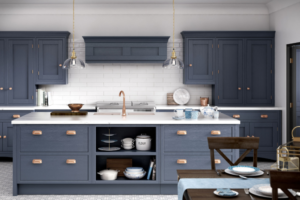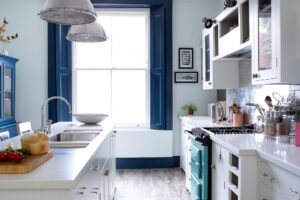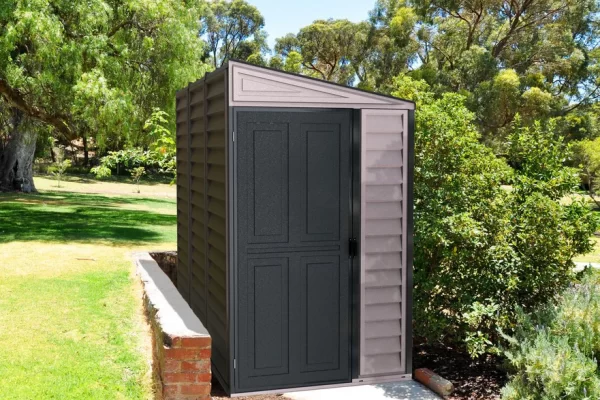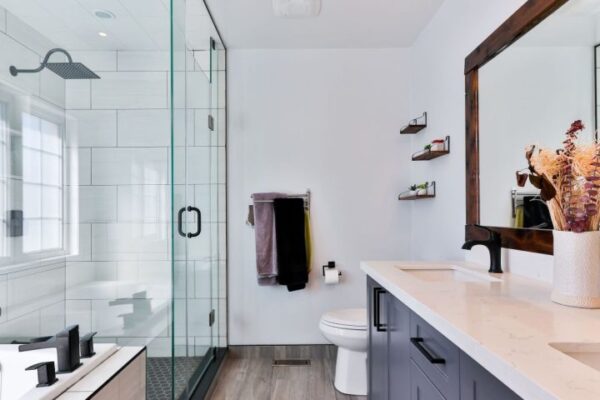The kitchen, often referred to as the heart of the home, is a central hub of activity and functionality. It’s also one of the areas under close scrutiny during a home inspection. Understanding what inspectors are looking for can help homeowners and potential buyers prioritize repairs and updates effectively. This article highlights the key components inspected in a kitchen, common defects found, recommended repairs, and how to prioritize functional updates over cosmetic enhancements.
Key Components Inspected in a Kitchen
- Plumbing: Inspectors check for leaks, proper faucet operation, and issues with the sink and drainage system. They’ll also examine the water pressure and test hot and cold water supply.
- Electrical Systems: This includes verifying that all outlets are functioning correctly and safely, particularly GFCI (Ground Fault Circuit Interrupter) outlets, which are mandatory in kitchens to prevent electrical shocks.
- Appliances: Built-in appliances like dishwashers, ranges, and ovens are tested to ensure they are in working order. Inspectors look for signs of wear, improper installation, or malfunction.
- Cabinets and Countertops: Inspectors assess the condition of cabinets and countertops for damage, poor installation, or structural issues.
- Ventilation: Proper ventilation is crucial in kitchens to remove odors, smoke, and moisture. Inspectors examine range hoods and venting systems to ensure they are vented to the outside and functioning correctly.
- Lighting and Windows: Adequate lighting and natural light are checked for both functionality and safety. Inspectors also look for signs of moisture or damage around windows.
Common Defects Found in Kitchens
- Leaking Faucets or Pipes: Persistent leaks can lead to water damage and mold growth.
- Faulty Wiring or Outlets: Outdated or improperly installed electrical systems pose significant safety hazards.
- Malfunctioning Appliances: Appliances not functioning as expected can be a sign of wear or improper maintenance.
- Damaged Countertops or Cabinets: Wear and tear or structural damage can affect the kitchen’s functionality and aesthetics.
- Inadequate Ventilation: Poor ventilation can lead to moisture issues, affecting air quality and leading to potential health risks.
Suggested Repairs and Updates
Based on the inspection findings, inspectors might suggest the following repairs:
- Plumbing Repairs: Fixing leaks, replacing worn fixtures, or updating old plumbing to prevent water damage.
- Electrical Upgrades: Updating wiring and outlets to meet current safety standards and improve kitchen safety.
- Appliance Replacement or Repair: Addressing any issues with appliances to ensure they are safe and functional.
- Cabinet and Countertop Restoration: Repairing or replacing damaged components to restore functionality and improve the overall look of the kitchen.
- Enhancing Ventilation: Upgrading range hoods or ventilation systems to ensure proper air quality and moisture control.
Prioritizing Repairs Over Cosmetic Updates
While it’s tempting to focus on aesthetic enhancements like new backsplashes or modern lighting fixtures, inspectors advise addressing any functional defects first:
- Safety Comes First: Electrical and plumbing issues should be rectified immediately to prevent potential hazards and damage from occurring.
- Functionality is Key: Ensuring appliances, cabinets, and countertops are in good working order improves the kitchen’s usability and overall home value.
- Prevent Further Damage: Addressing moisture and ventilation issues early can prevent more extensive damage to the kitchen and other areas of the home.
Conclusion: The Functional Heart of the Home
A kitchen inspection can reveal a lot about the overall health of a home. By focusing on the essential repairs and updates identified during a home inspection, homeowners and buyers can ensure the kitchen is not only beautiful but also safe and functional. Prioritizing these aspects over cosmetic changes can lead to a more enjoyable and secure living environment, ultimately enhancing the home’s value.








